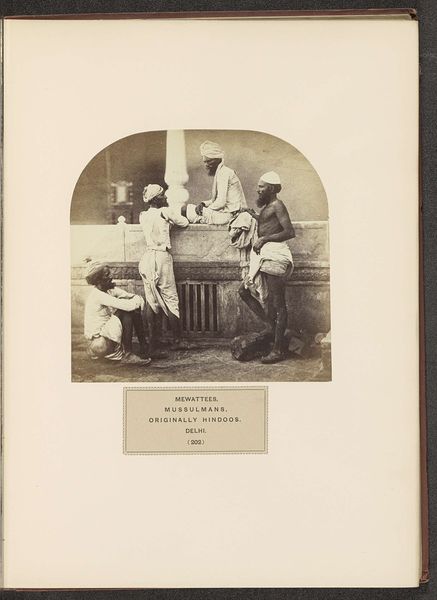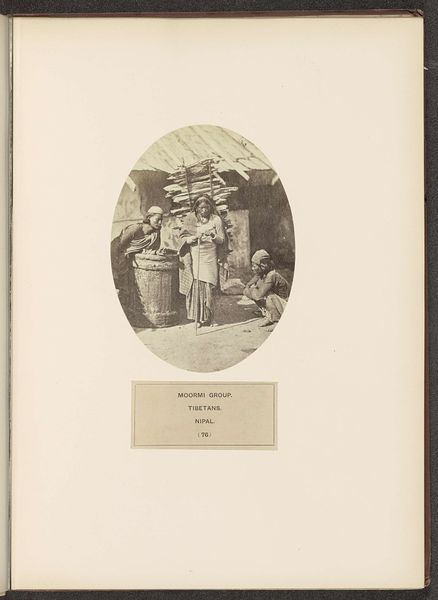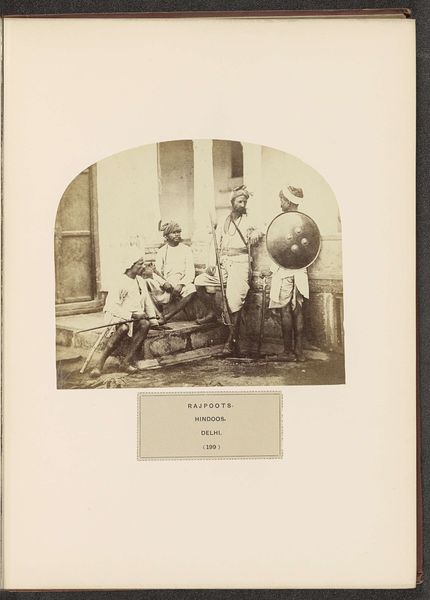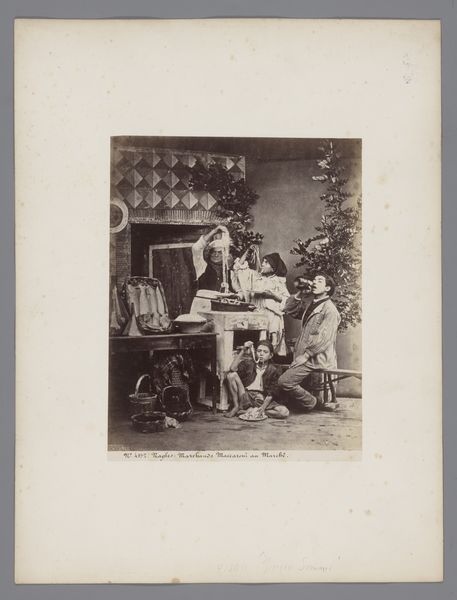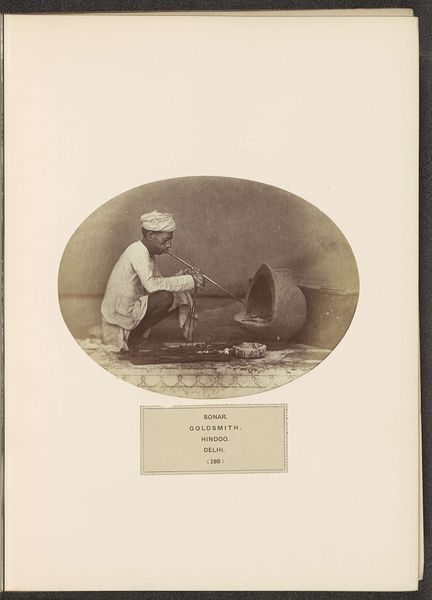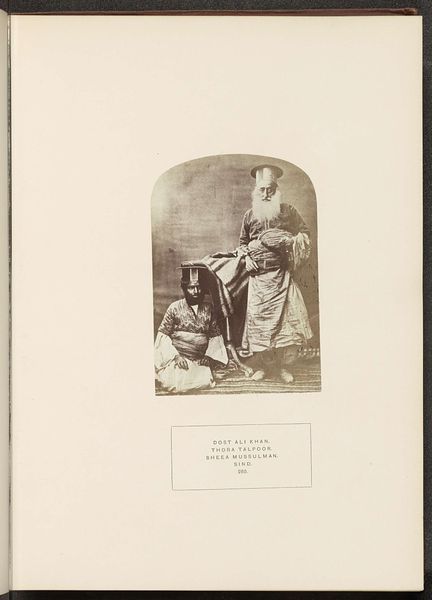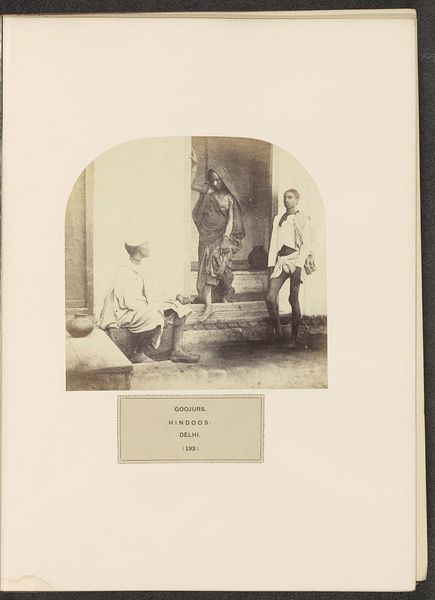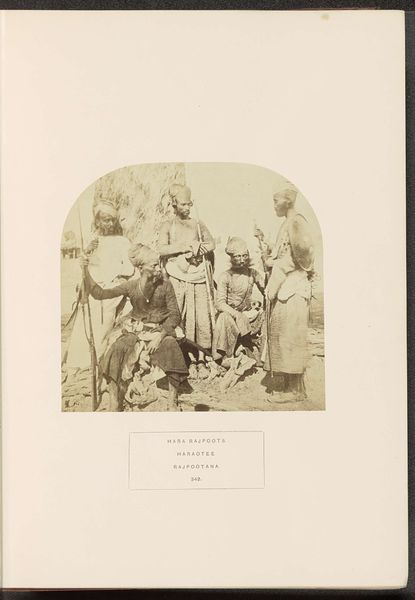
photography, albumen-print
#
asian-art
#
photography
#
orientalism
#
genre-painting
#
albumen-print
Dimensions: height 154 mm, width 208 mm
Copyright: Rijks Museum: Open Domain
Curator: Looking at this image, I’m struck by how quiet it feels. There’s an almost sepia dreaminess to it, even though it documents something very real. Editor: That's right. We’re looking at an albumen print from before 1869 titled, "Vier mannen die buiten textiel verven in Delhi" – or, “Four men dyeing textiles outside in Delhi”, created by Shepherd & Robertson. It's part of a broader genre that depicted life and culture in the East for a Western audience, commonly termed Orientalism. Curator: Orientalism, yes – it's a label loaded with the weight of colonial history and representation. It aimed to capture a kind of “truth” of a people, but often filtered through a very particular lens. In this photograph, the four figures seem caught in a timeless routine. Editor: Exactly. The bowls, the rudimentary tools… They all speak of tradition. The albumen print gives the scene this wonderfully soft, almost hazy feel. What details really stand out to you? Curator: Definitely the seated figures. Their expressions are very individualized. It feels as though their positions mirror aspects of life’s different stages – one seems deeply engrossed, another contemplative. They form a chain around the dyer at work, connecting process to person. The image echoes themes of tradition, industry, and contemplation all at once, reflecting the continuities of labour and life itself. Editor: I notice, too, how this photographic method, through tonal subtlety, seems to soften the sharper edges of labor, even in portraying fairly grueling work. In our current culture obsessed with color, these shades whisper something more. They give an almost sacred feel to mundane actions. What lingers for me is how an image, at its most potent, isn’t merely an encapsulation of the past, but also its prescient conversation partner. Curator: Well put. A testament to how photography, from its origins, has done so much more than simply mirroring the world around us.
Comments
No comments
Be the first to comment and join the conversation on the ultimate creative platform.

